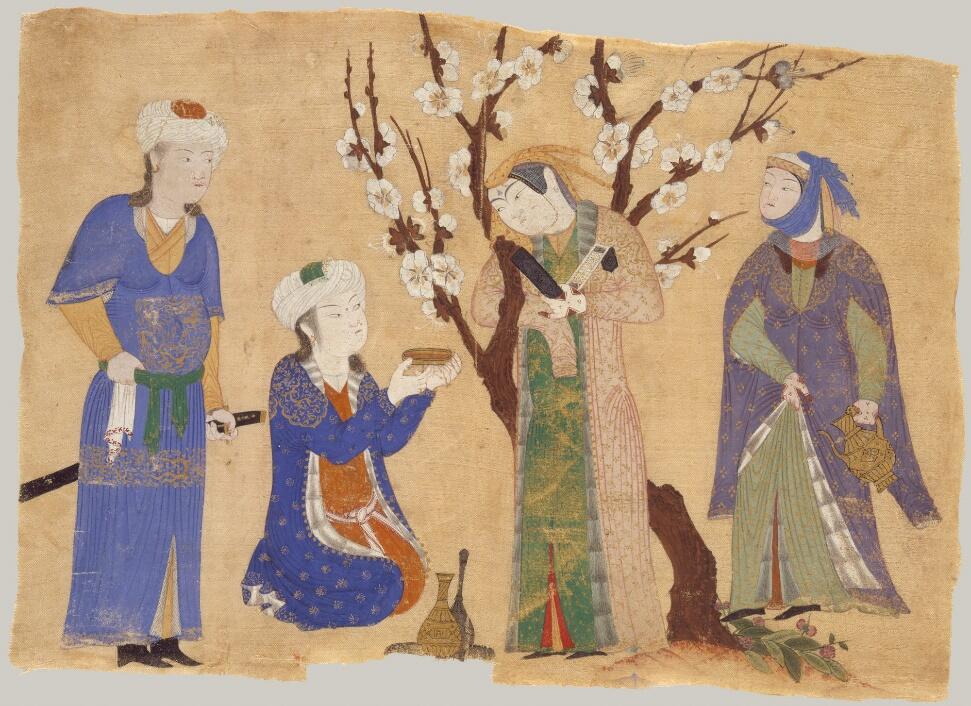Introduction
From 1400 to 1600 AD, the Renaissance period continued to take shape in Europe and other parts of the world. Most of the works of art produced during this era presented various attributes and aspects that rejected the ideas of the past. This paper gives a detailed analysis of these two works: Madonna and Child by Giovanni Bellini and Wine Drinking in a Spring Garden by an unknown painter.
Historical Analysis
Giovanni Bellini produced the work Madonna and Child, towards the end of the 1480s in Venice, Italy. Its medium is oil on wood and tries to present the true attributes and aspects associated with the Romanticism period (Dominiczak, 2017). Bellini was a famous Renaissance painter born in 1430 and died in 1516. Through his artworks, he managed to introduce a more coloristic and sensuous form of art.

The painting, Wine Drinking in a Spring Garden, was painted in the year 1430. Many historians and researchers indicate that the work was produced somewhere in Iran (Lin, Chen, Chen, & Lin, 2015). Its medium is gold and opaque watercolor on dyed silk. Based largely on the Romanticism period, the painter managed to get inspiration from the famous Chinese models of the time. This kind of influence is notable in the manner in which the artists arranged different figures. Nothing is known about the artist behind this work.

Visual Analysis
The painting by Giovanni Bellini employs the unique elements of art to make the work relevant and meaningful. Through the use of lines, shapes, dense colors, and value, the painter passes across the intended message. It is notable that the painting has a stable balance. The scenery presented on the left side appears to present an asymmetrical composition to the painting of the presented woman and the child. The painter maintains contrast through the use of different objects and solid colors. For example, the pulled cloth appears to reveal a hidden landscape that is contrasted with the four individuals (Dominiczak, 2017). This technique delivers emphasis in this painting. The use of minimal but contrasting colors presents rhythm. In terms of unity, all parts fit perfectly without creating monotony.
The elements of art are evident in the second work of art. The painter uses color, form, space, and shape to create the painting and deliver the intended message. The expert maintains asymmetrical balance by presenting four people who fit in the selected space perfectly. The use of warm and cool colors makes it easier for the viewer to realize that the work is properly contrasted (Hagen & Hagen, 2018). This achievement also creates harmony and emphasis. The painter presents a unique background that delivers the intended rhythm. The use of colors and space creates a sense of repetition, thereby giving the work a perfect pattern. The portrayal of a young person giving wine to a maiden creates movement.
Comparing and Contrasting the Works
The selected artworks have several things in common. For instance, they employ the use of color to deliver the targeted message. The concept of secularism is evident since the artists do not depict church paintings, as was the case with earlier art eras. The painters go further to portray the natural environment. Linear perspective is evident whereby all things appear relative to each other (Hagen & Hagen, 2018). Shading and light are seen to create depth. The propositions in the two paintings are also balanced.
There are also specific differences that are evident in these works. Firstly, Giovanni Bellini’s painting focuses on the concept of individualism, something that the other work misses. Secondly, an undefined background is evident that is informed by the Chinese art in Wine Drinking in a Spring Garden (Dominiczak, 2017). This is not the case with Bellini’s painting since it presents a verdant nature. The colors in Bellini’s work are dense, unlike the ones for the second one.
Artistic Movement: Discussion
As described above, these two artworks were created during the Renaissance period. However, they are from different geographical regions. For the first one, Bellini made such an artistic choice in an attempt to portray concepts of individualism, nature, and secularism that had become common during the Renaissance period. The painter also wanted to pass across the message of Christ by linking it to the notions of enlightenment. These attributes depict the culture of Europe from 1400 to 1600 (Dominiczak, 2017). In the second painting, the viewer observes that such an era had minimal influence on Asian painters. While the ideals of secularism, nature, and classism are evident in the second work, the artist borrowed numerous concepts from the Chinese style.
Conclusion
The selected works are significant because they give a detailed analysis of the issues and ideas that defined the Renaissance period. The two explain how the cultural values of Asia differed from those of Europe while at the same time promoting human enlightenment. The use of appropriate principles makes these works artistically meaningful. I selected them in an attempt to learn more about the impacts of the Renaissance on the European and Asian continents. These works are, therefore, important since those who analyze them will understand how art is a powerful tool for studying human history and culture.
References
Dominiczak, M. H. (2017). On art, wealth, and power: The Venetian Republic. Clinical Chemistry, 63(11), 1783-1785. Web.
Hagen, R., & Hagen, R. (2018). What great paintings say: Italian Renaissance. Cologne, DE: Taschen.
Lin, C., Chen, J., Chen, S., & Lin, R. (2015). The cognition of turning poetry into painting. US-China Education Review, 5(8), 471-487. Web.
The Metropolitan Museum of Art. (2019a). Madonna and Child. Web.
The Metropolitan Museum of Art. (2019b). Wine Drinking in a Spring Garden. Web.